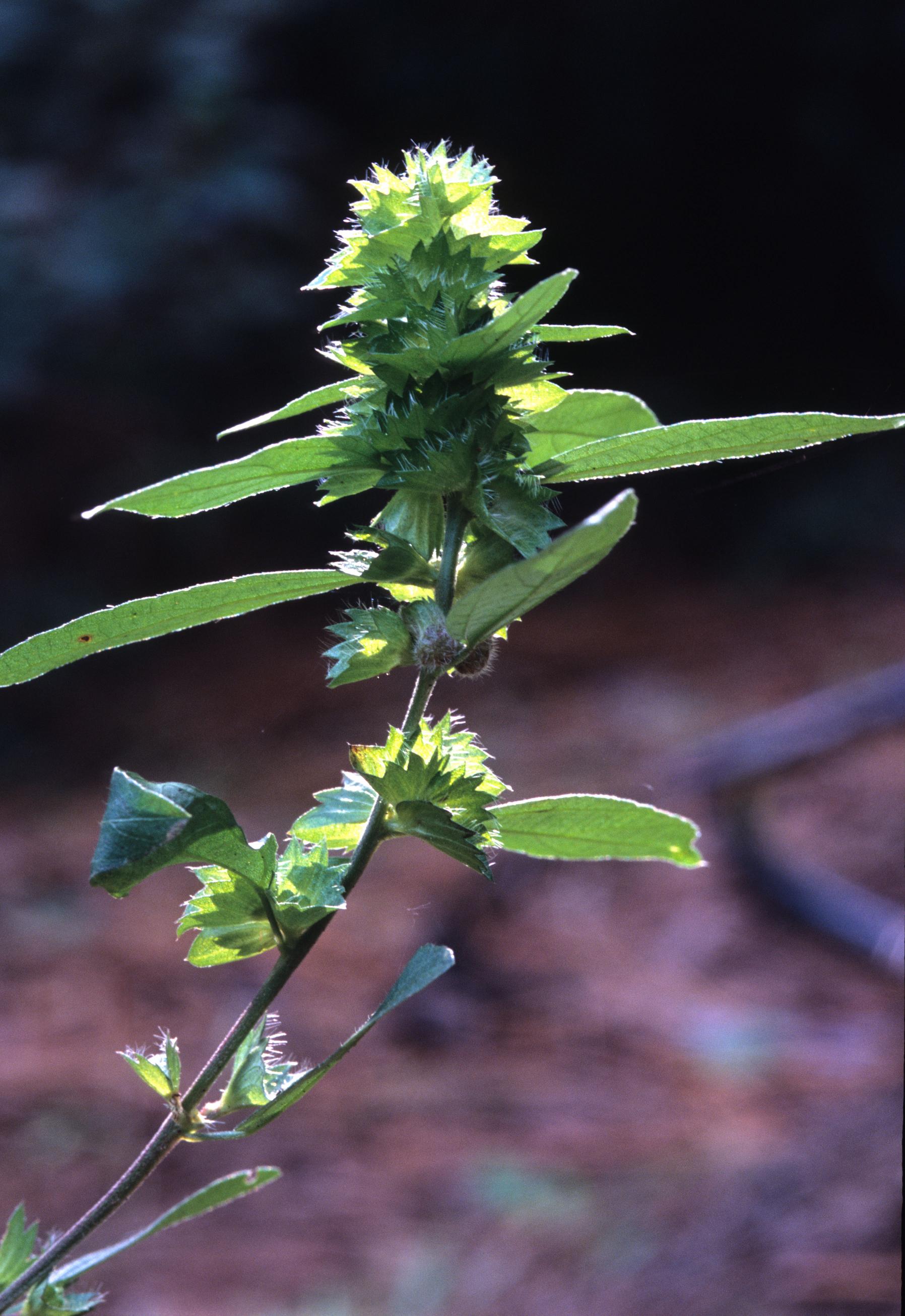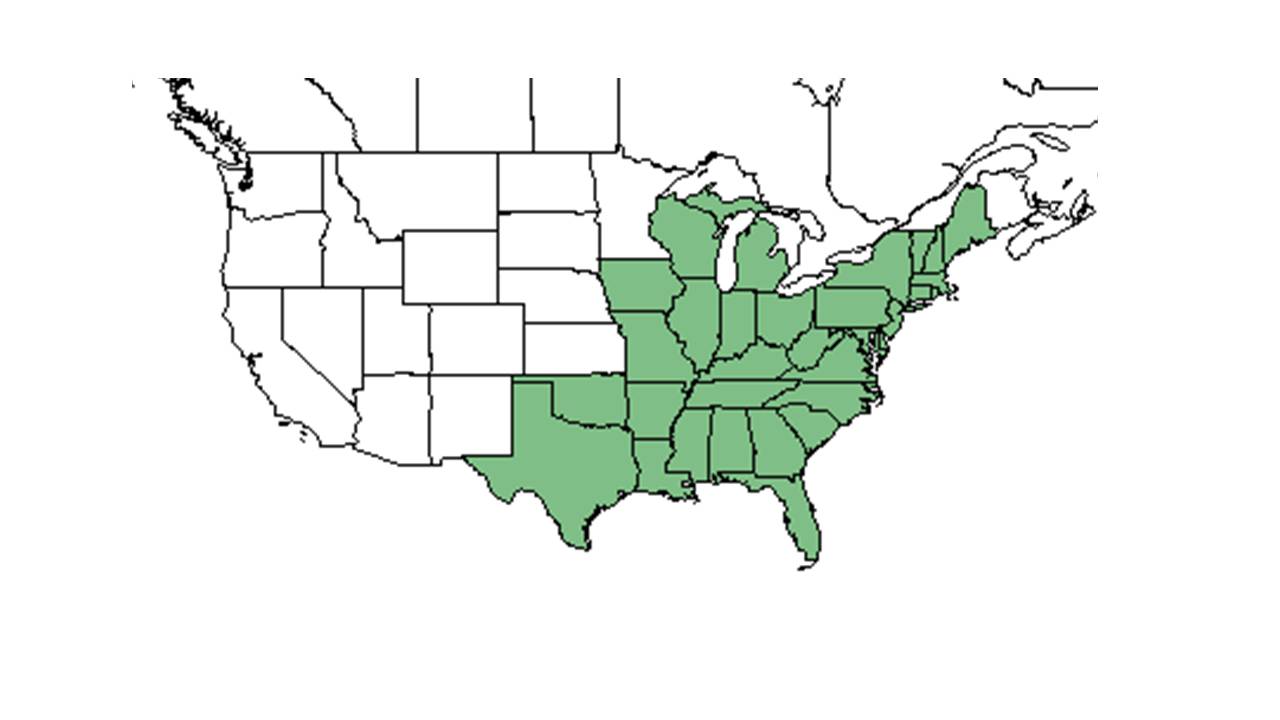Difference between revisions of "Acalypha gracilens"
Krobertson (talk | contribs) |
Krobertson (talk | contribs) |
||
| Line 41: | Line 41: | ||
===Phenology=== <!--Timing off flowering, fruiting, seed dispersal, and environmental triggers. Cite PanFlora website if appropriate: http://www.gilnelson.com/PanFlora/ --> | ===Phenology=== <!--Timing off flowering, fruiting, seed dispersal, and environmental triggers. Cite PanFlora website if appropriate: http://www.gilnelson.com/PanFlora/ --> | ||
| − | Flowers spring to fall through most of its range | + | ''A. gracilens'' Flowers spring to fall through most of its range. It flowers all year in south Florida.<ref name="Hall"/><ref>Nelson, G. PanFlora: Plant data for the eastern United States with emphasis on the Southeastern Coastal Plains, Florida, and the Florida Panhandle. www.gilnelson.com/PanFlora/ Accessed: 27 FEB 2019</ref> |
| + | |||
===Seed dispersal=== | ===Seed dispersal=== | ||
This species is thought to be dispersed by ants and/or explosive dehiscence. <ref>Kirkman, L. Katherine. Unpublished database of seed dispersal mode of plants found in Coastal Plain longleaf pine-grasslands of the Jones Ecological Research Center, Georgia.</ref> | This species is thought to be dispersed by ants and/or explosive dehiscence. <ref>Kirkman, L. Katherine. Unpublished database of seed dispersal mode of plants found in Coastal Plain longleaf pine-grasslands of the Jones Ecological Research Center, Georgia.</ref> | ||
Revision as of 12:07, 11 June 2021
| Acalypha gracilens A. Gray | |
|---|---|

| |
| Photo was taken by Gil Nelson | |
| Scientific classification | |
| Kingdom: | Plantae |
| Division: | Magnoliophyta - Flowering plants |
| Class: | Magnoliopsida - Dicotyledons |
| Order: | Euphorbiales |
| Family: | Euphorbiaceae |
| Genus: | Acalypha |
| Species: | A. gracilens |
| Binomial name | |
| Acalypha gracilens A. Gray | |

| |
| Natural range of Acalypha gracilens from USDA NRCS Plants Database. | |
Common names: Slender threeseed mercury; Three-seeded mercury; Shortstalk copperleaf
Contents
Taxonomic notes
Synonyms: Acalypha virginica var. gracilens[1]
Description
Annual. Plant is erect with pubescent stems coming from the taproots. The leaves are alternate with two lateral veins beginning from the base, prominent and parallel to the midrib, crenate to crenate-serrate, or petiolate. The spikes are axillary or terminal, or both. The bracts are leaf-like. Flowers have no petals. The flowers are pistillate with 3-5 sepals and a 3-locular ovary. The staminate flowers have 4 sepals and 8-16 stamens. The capsules are broader than they are long.[2]
The plant grows up to 0.8 m high. The stems are freely branched and densely pubescent with short incurved (or appressed) ascending trichomes. The leaves are elliptic to elliptic-lanceolate which are 2-6 cm long and 0.5-2 cm wide, obtuse, crenate. The base of the leaves are cuneate to rounded, with pubescence of both surfaces (more or less glabrate). The petioles of principle leaves are 0.4-1.5cm long. The axillary spike has 1-5 pistillate flowers near the base that are interrupted and continued with a spike of staminate flowers. The pistillate bracts are often stipitate-glandular, teeth triangular, 5-13. The seeds are reddish to black in color and are ovoid, 1.2-1.8 mm long. Flowers in June and into late frost.[2]
Distribution
It is frequent in north, central, and west Florida. It is also found west to Texas and north to Massachusetts. A. gracilens is also found in Virginia, Georgia, Florida, Alabama, and West Virginia.[2]
Ecology
Habitat
In the Coastal Plain it can be found in frequently burned sandhills (Entisol soils), pine flatwoods (Spodosol soils), and upland pine communities (Ultisol soils), as well as floodplain forest (Alphasol soils). It thrives in frequently burned pine communities.[3] It occurs in both native communities and areas with very disturbed soil. It occurs in a fairly wide range of well-drained soils, from deep sand to loams. Its light tolerance is fairly broad, from full light to shaded areas on the edges of open areas[4]. Common plant in southeastern U.S. pine communities. It is found in sandhills, flatwoods, hammocks, woodlands and disturbed sites.[2][5] In addition to the Coastal Plain it is common throughout the Piedmont region and infrequent in the Appalachian mountains.[2]
Associated species include Liatris gracilis, L. tenuifolia, Polygonella gracilis, Diodia teres, Chrysopis lanuginosa, Rubus cuneifolis, Hypericum gentianoides, Trichostema dichotomum, Eupatorium compositifolium, and others[4].
A. gracilens is an indicator species for the Clayhill Longleaf Woodlands community type as described in Carr et al. (2010).[6]
Phenology
A. gracilens Flowers spring to fall through most of its range. It flowers all year in south Florida.[5][7]
Seed dispersal
This species is thought to be dispersed by ants and/or explosive dehiscence. [8]
Seed bank and germination
Observations on germination of A. graciliens on the Wade Tract (Thomas Co. GA) longleaf pine savanna indicate that seeds germinate in the summer, post-fire in burned patches, and at similar times in unburned patches. Growth occurs throughout the summer, and flowering occurs in the late summer/early fall. Seeds mature and rapidly are dispersed in the early fall. Plants then become senescent and do not survive the winter. Areas of the Wade Tract with populations of A. graciliens do not always have plants present every year, suggesting that there is a seed bank with at least short-term dormancy.[9]
Pollination and use by animals
A. gracilens is used by seed-eating songbirds and northern bobwhite quail, and in the Southeast a high-use classification for white-tailed Deer as a forage plant due to their higher abundance in disturbed sites. [10] This plant has been observed as a host for Coridromius chenopoderis (family Miridae), an invasive insect originating from Australia.[11]
Conservation, cultivation and restoration
Cultural use
Photo gallery
References and notes
- ↑ Weakley, A.S. 2015. Flora of the southern and mid-atlantic states. Working Draf of 21 May 2015. University of North Carolina at Chapel Hill, Chapel Hill, North Carolina.
- ↑ 2.0 2.1 2.2 2.3 2.4 Radford, Albert E., Harry E. Ahles, and C. Ritchie Bell. Manual of the Vascular Flora of the Carolinas. 1964, 1968. The University of North Carolina Press. 664-665.
- ↑ Heuberger, K. A. and F. E. Putz (2003) Fire in the suburbs: ecological impacts of prescribed fire in small remnants of longleaf pine (Pinus palustris) sandhill. Restoration Ecology 11: 72-81.
- ↑ 4.0 4.1 Florida State University Robert K. Godfrey Herbarium database. URL: http://herbarium.bio.fsu.edu. Last accessed: June 2014. Collectors: Loran C. Anderson, Cecil R. Slaughter, R.A. Norris, R.F. Doren, and Robert K. Godfrey. States and Counties: Florida: Calhoun, Gadsden, Leon, Liberty, Wakulla, and St. Johns. Georgia: Thomas. Compiled by Tall Timbers Research Station and Land Conservancy.
- ↑ 5.0 5.1 Hall, David W. Illustrated Plants of Florida and the Coastal Plain: based on the collections of Leland and Lucy Baltzell. 1993. A Maupin House Book. Gainesville. 159.
- ↑ Carr, S.C., K.M. Robertson, and R.K. Peet. 2010. A vegetation classification of fire-dependent pinelands of Florida. Castanea 75:153-189.
- ↑ Nelson, G. PanFlora: Plant data for the eastern United States with emphasis on the Southeastern Coastal Plains, Florida, and the Florida Panhandle. www.gilnelson.com/PanFlora/ Accessed: 27 FEB 2019
- ↑ Kirkman, L. Katherine. Unpublished database of seed dispersal mode of plants found in Coastal Plain longleaf pine-grasslands of the Jones Ecological Research Center, Georgia.
- ↑ Platt, W.J. 2019. Personal observation.
- ↑ Miller, J. H. and K. V. Miller (1999). Forest Plants of the Southeast and Their Wildlife Uses, Southern Weed Science Society.
- ↑ Discoverlife.org [1]
